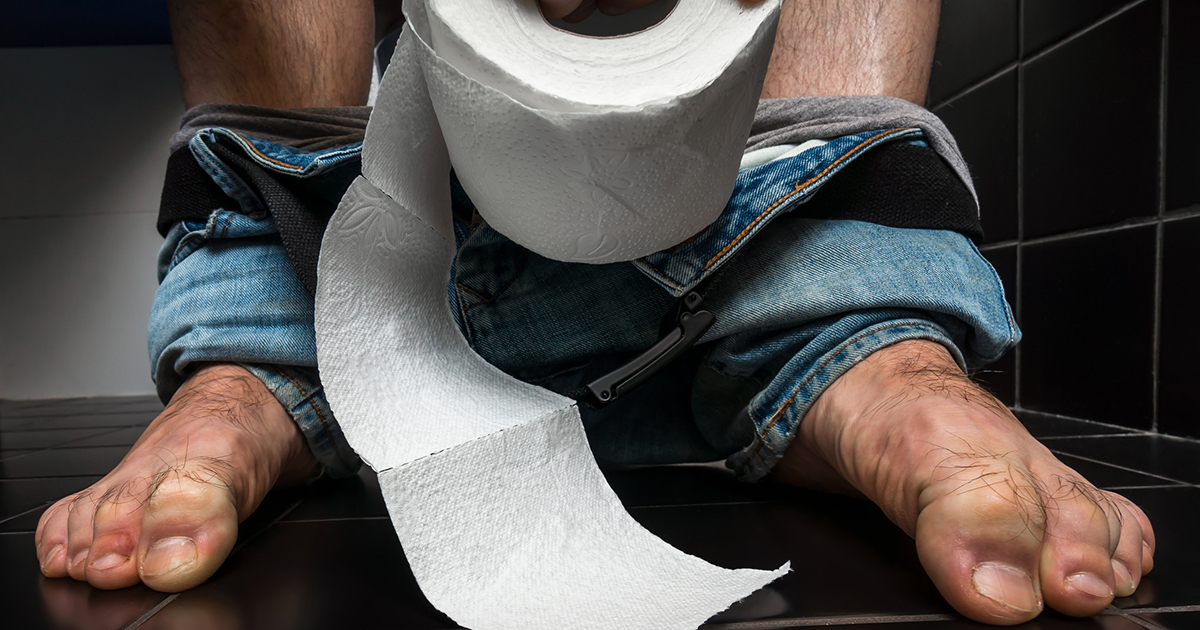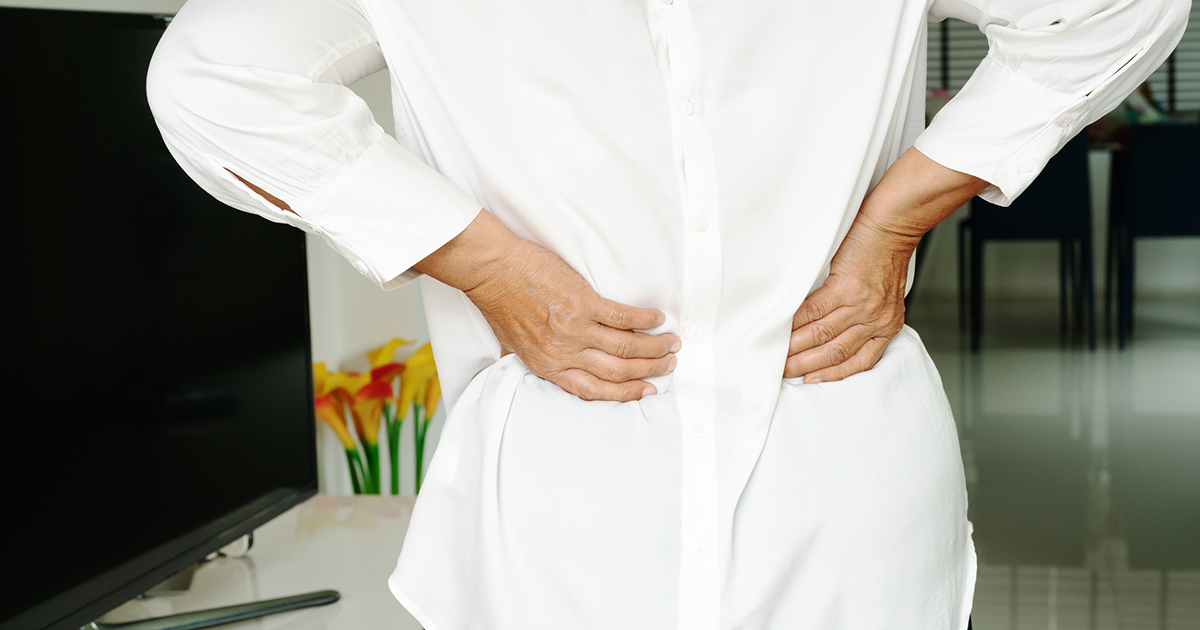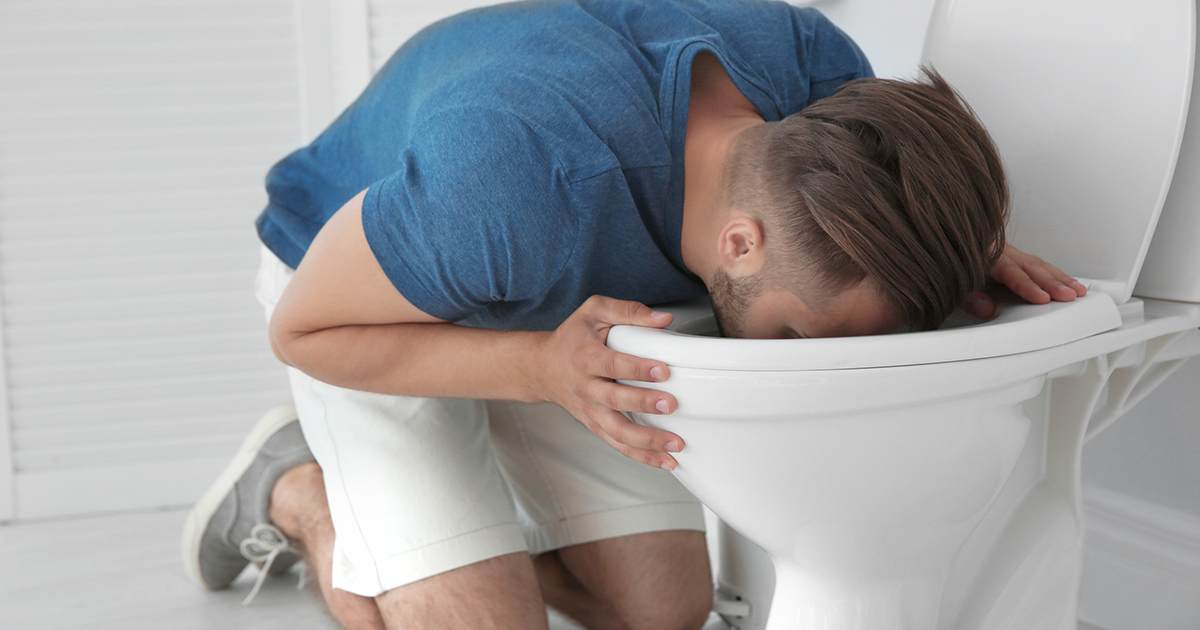Symptoms Of Cyclosporiasis
Cyclosporiasis is an intestinal infection that occurs due to a microscopic parasite. Patients typically become infected after consuming contaminated water or food, and symptoms usually take a week to appear. This infection is most often seen in subtropical or tropical regions, but in the United States, infected produce can cause it. This infection can sometimes be difficult to detect since the symptoms are largely nonspecific. To ensure a definitive diagnosis, the doctor will order a specialized stool test. Once it is confirmed, patients are prescribed an antibiotic combination that includes both sulfamethoxazole and trimethoprim. Those who are unable to use this combination of medication may be prescribed either nitazoxanide or ciprofloxacin, two other antibiotics. Continue to learn about the symptoms to watch out for with cyclosporiasis.
Diarrhea

The hallmark symptom of this infection is diarrhea, which is described as profuse, water, and malodorous. It can be explosive at times. The biggest concern is dehydration since water is lost every time diarrhea occurs. Patients are encouraged to drink fluids consistently until it resolves. If sufficient fluids are not consumed, complications can occur, such as excessive thirst, little to no urination, tiredness, dry skin or mouth, dizziness, dark-colored urine, and weakness. Doctors might also recommend electrolyte replacement since this too can occur with diarrhea. Anti-diarrheal medications may be considered in addition to electrolyte replacement, fluid replacement, and treating the underlying infection.
Continue to reveal the next symptom.
Stomach Cramps

Since cyclosporiasis affects the intestines, it is common to experience stomach cramps. Once the antibiotics start to clear the infection, the cramps typically start to dissipate. However, there are options patients can use in the interim to calm this symptom. Heat and rest can help to calm the muscles in the stomach to reduce the severity of the cramps. Ginger or chamomile tea may help to alleviate cramps and nausea that often accompanies them. Replacing fluids and electrolytes is important since dehydration can intensify stomach cramps. Doctors might also recommend antacid medicines or pain relief medication to make the cramps easier to cope with.
Keep reading to understand more symptoms of cyclosporiasis.
Muscle Aches

The muscles aches that occur with cyclosporiasis can range from mild to moderate, and any part of the body can be affected. Doctors might recommend pain medication to reduce the aches to a more tolerable level. Acetaminophen or nonsteroidal anti-inflammatory medication, such as ibuprofen, are the most frequently used. It is important patients only take these exactly as their doctor recommends. On the aching areas, alternating heat and ice might be helpful. Make sure to place a cloth on the skin before the heat or ice source to prevent heat or ice burns. Each should only be used for about fifteen minutes each time before alternating or breaking from this method.
There are more symptoms of cyclosporiasis. Get ready for the next one now.
Fatigue

Cyclosporiasis is taxing on the body, so it is common to feel fatigued while the body is fighting it off, which is why getting plenty of rest is recommended until the symptoms begin to resolve. Making sure to not become dehydrated is imperative since fatigue is a common symptom of low fluids. Unfortunately, there are no medications that can directly improve a patient’s fatigue. However, reducing stress and meditating might be helpful. Eating nutritious foods can be beneficial, especially those containing electrolytes and vitamin B. Patients might also consider gentle exercise since this too can promote energy. Good exercise options include yoga, short walks, and gentle stretching.
The next pair of symptoms are hallmarks in a condition like cyclosporiasis. Keep reading to learn more.
Nausea And Vomiting

Nausea and vomiting are common symptoms in many illnesses and are often among the initial symptoms of cyclosporiasis. Once the antibiotics start to clear the infection, both of these symptoms usually alleviate, though this can take at least a few days. The most important thing patients can do during this time is to replace their fluids, since because vomiting causes a loss of water, dehydration is a potential complication. Patients should also replace electrolytes when they are vomiting.
Thankfully, there are medications to help calm these symptoms. Anti-nausea medication can calm the stomach and might be recommended along with an antacid if the patient also has indigestion. Ginger tea and eating bland foods is also usually suggested.